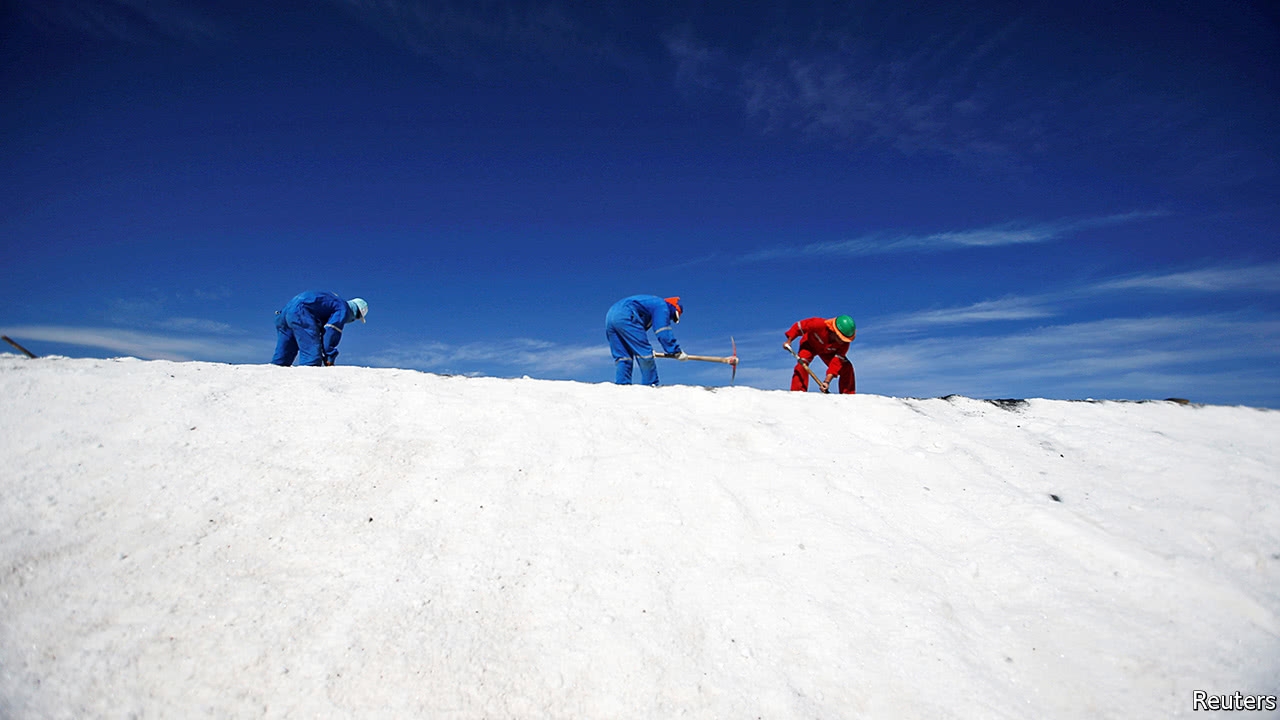Latin America
Related: About this forumA battle for supremacy in the lithium triangle
The white gold rush
Three South American countries have much of the world’s lithium. They take very different approaches to exploiting it

Jun 15th 2017 | LA PAZ, SAN SALVADOR DE JUJUY AND SANTIAGO
THE Olaroz salt flat sits nearly 4,000 metres (13,000 feet) above sea level at the end of a road that snakes through the Andes mountains. The loudest sound in the featureless expanse is a mechanical one, made by untended pumps. They extract lithium-bearing brine from wells sunk deep below the salt crust and deposit it in evaporation pools. The concentrate will be taken to a nearby plant for processing into lithium carbonate. The operation in Argentina’s Jujuy state, an Argentine-Australian-Japanese joint venture, is one of the country’s two working lithium mines. Last year it produced 11,845 tonnes of lithium carbonate, about 6% of the world’s output. This year Sales de Jujuy plans to make 17,500 tonnes.
Lithium is a coveted commodity. Lithium-ion batteries store energy that powers mobile phones, electric cars and electricity grids (when attached to wind turbines and photovoltaic cells). Joe Lowry, an expert on the lightest metal, expects demand to nearly triple by 2025. Supply is lagging, which has pushed up the price. Annual contract prices for lithium carbonate and lithium hydroxide doubled in 2017, according to Industrial Minerals, a journal. That is attracting investors to the “lithium triangle” that overlays Argentina, Bolivia and Chile (see map). The region holds 54% of the world’s “lithium resources”, an initial indication of potential supply before assessing proven reserves (see chart).
The three countries have not been equally eager to seize the opportunity. Market-friendly Chile has a big head start. Argentina is hastening to make up lost ground, as the activity on the Olaroz salt flat suggests. Bolivia, whose resources are as large as Argentina’s, has barely begun to exploit them. Those differences suggest much about how the South American trio treat enterprise and investment more generally. They face a formidable challenger in Australia, where lithium must be expensively crushed out of rock and shipped to China for processing, but investment conditions are friendlier.
The regional champ
Chile dominated the world lithium markets for decades. The Atacama salt flat has the largest and highest-quality proven reserves. The desert’s blazing sun, scarce rainfall and mineral-rich brines make Chile’s production costs the world’s lowest. Allied to this is the region’s most benign investment climate. Chile is far ahead in rankings of ease of doing business, levels of corruption, and the quality of its bureaucracy and courts (see charts). Its lithium deposits are close to Antofagasta and other Chilean ports; the lithium carbonate that is produced in Jujuy passes through them.
More:
http://www.economist.com/news/americas/21723451-three-south-american-countries-have-much-worlds-lithium-they-take-very-different
Environment & Energy:
https://www.democraticunderground.com/1127111070